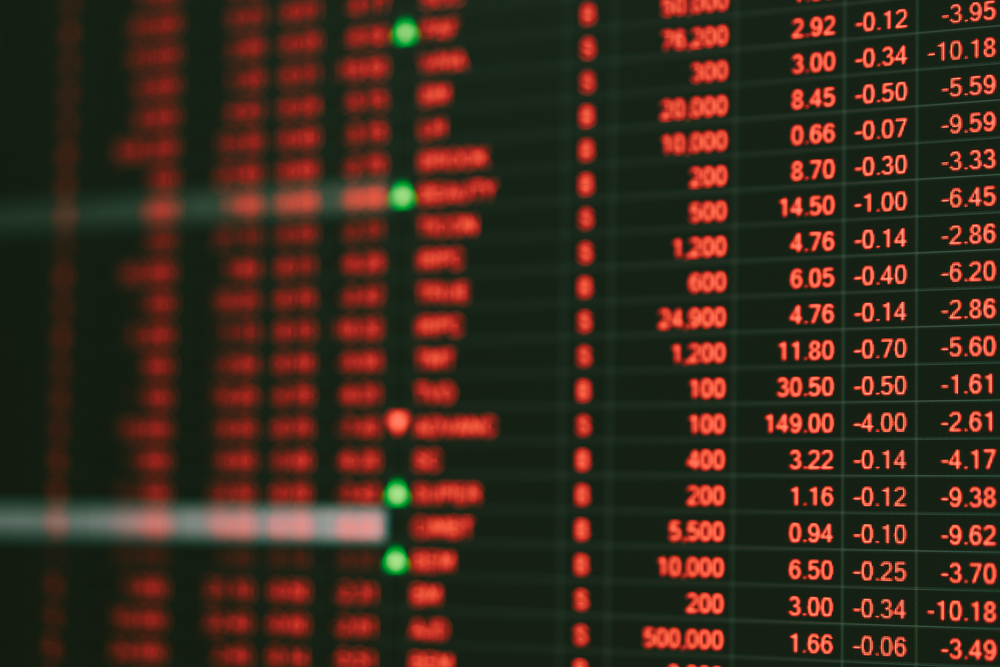Thematic hotshots in the clean energy and blockchain ETF segments booked punishing losses in Q3 as hawkish central bank messaging and rising sovereign bond yields cast a long shadow over riskier and indebted nascent sectors.
Filling out the bottom of the pack last quarter were clean energy subthemes including the HANetf Electric Vehicle Charging Infrastructure UCITS ETF (ELEC), Invesco Solar Energy UCITS ETF (ISUN), Global X CleanTech UCITS ETF (CTEK) and Global X Hydrogen UCITS ETF (HYDR), falling 29.9%, 27%, 23.9% and 22.3%, respectively.
However, broad clean energy thematics were not immune to losses. While just inside bottom 20 performers, the world’s most popular clean energy ETF, the iShares Global Clean Energy UCITS ETF (INRG), returned -20.2% in the three-month period – falling to its lowest level since July 2020.
Recent declines have been led by sensitivity to interest rate hikes – with the Federal Reserve’s funds rate maintained at a two-decade-high – increasing borrowing costs for utility operators looking to build out new capacity.
Meanwhile, the International Energy Agency (IEA) found in 2020 that rate hikes have an adverse effect on the cost of energy generation from renewable sources.
It said a 5% rate hike increases the 'levelised cost' of wind and solar generated electricity by around a third, with only a marginal effect for natural gas plants.
Kenneth Lamont, senior fund analyst at Morningstar, previously noted the fastest Fed hiking cycle since the 1980s has posed a “significant headwind”, despite supportive policy including the multi-trillion dollar US Inflation Reduction Act.
“All else held equal, raising the rate used for discounting expected future cashflows hits growth stocks particularly hard because those expected cash flows are expected later and therefore get discounted more than companies with stronger current revenues, but with less growth potential,” Lamont said.
Morningstar also noted other challenges for clean energy subsectors including falling prices compressing margins and factory expansions, sparking fears of overcapacity for solar panels and electric vehicles.
The climbdown of H1 victors
In much the same story, blockchain ETFs have slumped amid more hawkish messaging from Fed Chair Jerome Powell and his peers. The Global X Blockchain UCITS ETF (BKCH), WisdomTree Blockchain UCITS ETF (WBLK) and VanEck Crypto and Blockchain Innovators UCITS ETF (DAPP) shed 24.3%, 20.6% and 20.4% in Q3, respectively.
As well as sparking fears of higher borrowing costs and discounting future cash flows for growth-mode blockchain companies, the Fed’s ‘higher for longer’ policy rhetoric pushed 10-year US Treasury yields to a 16-year high of 4.8% last week.
The increasing income potential on seemingly safe haven assets including US sovereign debt takes the sheen off the stratospheric – triple digit in H1 – gains of riskier assets including blockchain mining equities.
Another explanation for recent climbdowns in blockchain ETF valuations could be continued uncertainty and delays to the approval of a spot bitcoin ETF in the US by the Securities and Exchange Commission (SEC).
A thematic swan song?
Elsewhere, Q3 may have marked the last gasp of cannabis thematic ETFs in Europe amid product and issuer mergers and acquisitions.
HANetf announced it would merge its “no longer viable” Medical Cannabis and Wellness UCITS ETF (CBDX) into its HAN-GINS Indexx Healthcare Megatrends Equal Weight UCITS ETF (WELL) on 29 September, marking the effective end of the strategy.
In the same month, Rize ETF was acquired from AssetCo by ARK Invest for £5.25m. It is unclear what this will mean for undersized products including the Rize Medical Cannabis and Life Sciences UCITS ETF (WELL) – and whether such products will be continued, merged or discontinued altogether.
Q3 marked a challenging three months for the cannabis theme, with CBDX falling 26.7% as a number of its underlying constituents were removed from its underlying index or delisted altogether.








